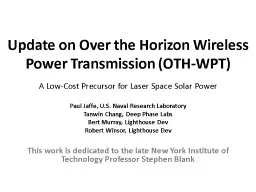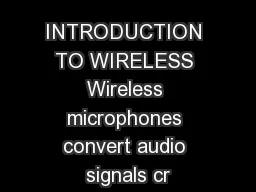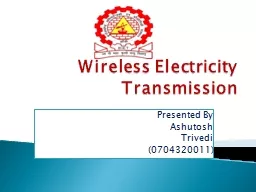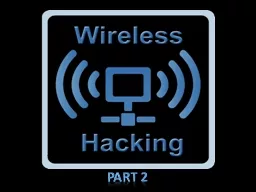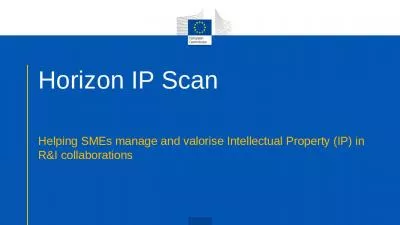PPT-Update on Over the Horizon Wireless Power Transmission (OTH
Author : kittie-lecroy | Published Date : 2016-09-11
A LowCost Precursor for Laser Space Solar Power Paul Jaffe US Naval Research Laboratory Tanwin Chang Deep Phase Labs Bert Murray Lighthouse Dev Robert Winsor Lighthouse
Presentation Embed Code
Download Presentation
Download Presentation The PPT/PDF document "Update on Over the Horizon Wireless Powe..." is the property of its rightful owner. Permission is granted to download and print the materials on this website for personal, non-commercial use only, and to display it on your personal computer provided you do not modify the materials and that you retain all copyright notices contained in the materials. By downloading content from our website, you accept the terms of this agreement.
Update on Over the Horizon Wireless Power Transmission (OTH: Transcript
Download Rules Of Document
"Update on Over the Horizon Wireless Power Transmission (OTH"The content belongs to its owner. You may download and print it for personal use, without modification, and keep all copyright notices. By downloading, you agree to these terms.
Related Documents

